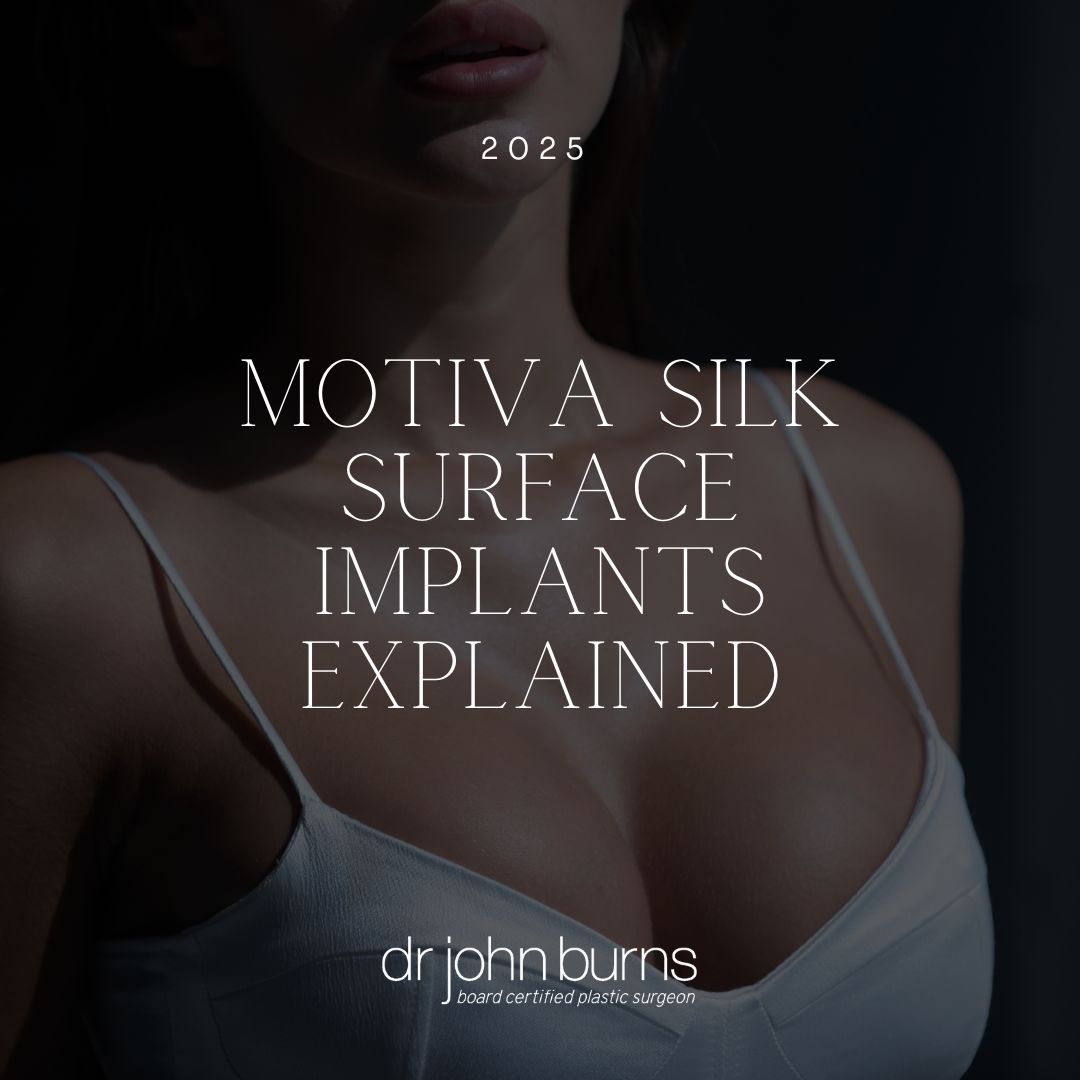Ruptured or Leaking Breast Implants
What to Do Next
Dr. John Burns Dallas
What to Do if You Have Ruptured or Leaking Breast Implants
While today’s implants are safer and more durable than ever, they are not lifetime devices. Rarely, an implant may leak or rupture. Knowing the signs and next steps is essential for your health and long-term results.
Understanding Breast Implant Rupture
A rupture occurs when the implant’s outer shell develops a tear or hole, allowing the filling to escape. The impact depends on the implant type:
• Saline Implants: Filled with sterile salt water. A rupture causes rapid deflation, with the body safely absorbing the fluid. The breast usually looks suddenly smaller or flatter.
• Silicone Gel (“Gummy Bear”) Implants: Filled with cohesive silicone gel. If ruptured, the gel typically stays in place, leading to a “silent rupture” with little to no obvious change in breast size or shape.
Signs and Symptoms of a Silicone Implant Rupture
Unlike saline implants, silicone ruptures are often subtle. Potential signs include:
• Changes in breast shape or size
• Breast softening or hardening
• Capsular contracture (tightened scar capsule)
• Asymmetry between breasts
• Tenderness or swelling
In many cases, there are no symptoms at all, which is why regular screening is critical.
Diagnosing a Ruptured Implant
If a rupture is suspected, your surgeon will recommend imaging:
• MRI: The most accurate method for silicone implant rupture detection. Findings include the classic “linguine sign.”
• Ultrasound: Useful, less costly, and radiation-free; often used as a first-line test.
• Mammogram: May reveal leakage or displacement but is less sensitive for rupture.
Routine Screening and Implant Longevity
The FDA recommends MRI or ultrasound 5–6 years after silicone implant placement and every 2–3 years afterward, even without symptoms.
On average:
• Gummy bear implants last 15–20 years.
• Many patients elect replacement after 10–15 years, either due to aging, natural body changes, or personal preference.
👉 Curious about the latest implant options? Read our blog on Preserve Breast Augmentation with Motiva Implants.
What Happens If a Rupture Is Confirmed
If diagnosed with a rupture, prompt removal and replacement is necessary:
• Timeline: Surgery should be scheduled within several months to avoid tissue changes or inflammation.
• Procedure: Removal of the ruptured implant, sometimes with capsulectomy (removing scar capsule if thickened or inflamed).
• Options at Replacement: Many patients take this opportunity to:
• Upsize or downsize
• Switch implant type or profile
• Combine with a breast lift for improved shape and symmetry

Why Choose Dr. John Burns in Dallas for Implant Replacement
When it comes to breast surgery, experience matters.
• 25+ years of experience specializing in cosmetic breast surgery
• Named by D Magazine as Best Doctor in Breast Augmentation
• Recognized by Newsweek and Texas SuperDoctors as one of America’s top surgeons
• Performs surgery at a private, AAAASF-certified facility for maximum safety and comfort
Dr. Burns combines technical precision with artistic vision to ensure natural, balanced results—whether replacing implants or performing a revision.

Final Thoughts
While breast implant rupture is uncommon, it’s important to recognize the signs, undergo routine screenings, and seek treatment if an issue arises. With modern techniques and advanced implant technology, replacement offers an opportunity not just to restore, but often to enhance your results.
✨ Schedule your consultation with Dr. John Burns, MD, FACS in Dallas, TX, to discuss implant replacement or revision.
Stay In Touch
Follow us for news and information on plastic surgery procedures





